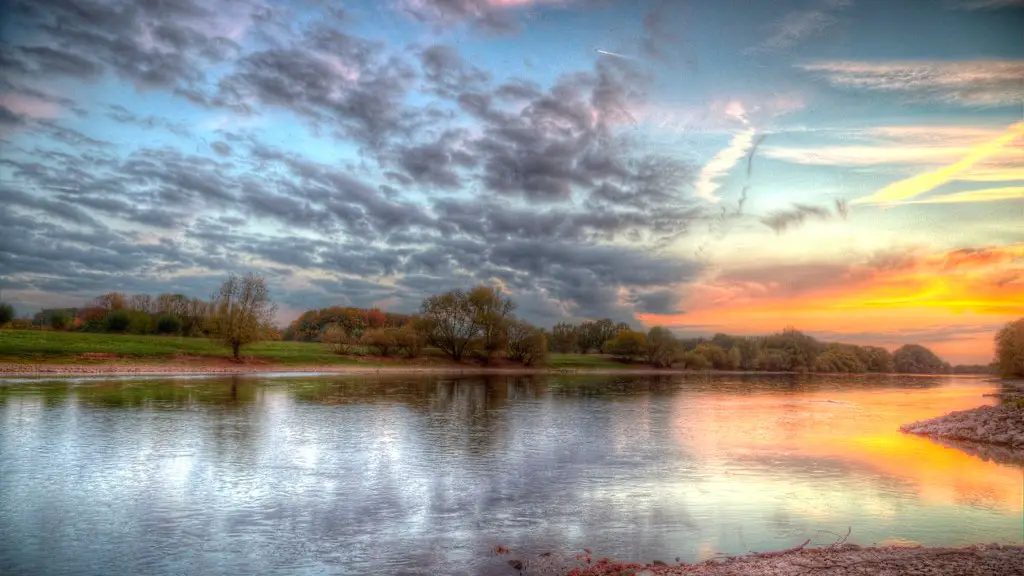The Mississippi River is a major waterway that flows through the United States, connecting the Great Lakes with the Gulf of Mexico. It is the second longest river in North America, stretching more than 2,350 miles from Minnesota to Louisiana. Along its banks, the Mississippi passes or touches several states, including Wisconsin, Iowa, Illinois, Missouri, Kentucky, Tennessee, Arkansas, and Mississippi. Each of these states has cities that are located directly on the Mississippi River, and their economies have been shaped by the river for centuries. From the bustling metropolis of Minneapolis to the charming cities that can be found further south — here is a look at some of the most interesting cities on the Mississippi River.
Minneapolis-St. Paul, Minnesota:
Connected by the Mississippi River, the twin cities of Minneapolis-St. Paul are a major economic hub in the Midwest. Minneapolis sits on the western bank of the Mississippi while St. Paul overlooks the east bank. Together, they form the 16th largest metropolitan area in the U.S. The area was originally inhabited by the Dakota and Ojibwe peoples, who were drawn to the fertile land, abundant fishing and numerous wasters; the river played an integral role in their lives and economy. European settlers and traders arrived in the early 19th century and the two cities eventually grew into a major transportation and manufacturing hub. Today, Minneapolis-St. Paul is home to Fortune 500 companies, universities, museums, and cultural centers.
La Crosse, Wisconsin:
The city of La Crosse overlooks the Mississippi River from the Wisconsin side. This vibrant city is the largest in the region, with a population of more than 50,000. La Crosse was founded in 1841 by French-Canadian settlers and named after the game of La Crosse, which was popular among Native Americans in the area. It quickly grew as a major transportation and industrial hub, with its river access being the primary factor. The city’s economy has expanded to include education, healthcare, and technology, among other industries. It is also home to the University of Wisconsin-La Crosse and the Mississippi Valley Archaeology Center.
Quincy, Illinois:
Quincy is a small Midwestern city located on the east bank of the Mississippi River. It has a population of around 40,000, making it the largest city in the area. Quincy was founded in 1822 and quickly became a river port and trading post. It also became a center of Illinois’ antislavery movement during the pre-Civil War era. After the war, the city industrialised and the population grew. In the 1950s, the city began to diversify its economy, with the addition of manufacturing and health care. Today, Quincy is a vibrant and diverse city, with a mix of industry, education, and culture.
Cairo, Illinois:
Cairo is a small Illinois river town located on the tip of the south-westernmost of the Mississippi’s many tributaries. It has a population of around 3,000 and is both steeped in history and progressive in attitude. Cairo has a rich Native American heritage and was the site of a bloody Civil War battle. In the late 1800s, the city’s main industry was river-based transportation and trade. Today, Cairo is known as “The Heart of the Delta” and is a popular destination for fishing, hunting, and camping. The town’s economy has been recently revitalized by tourism and new business development.
Vicksburg, Mississippi:
Vicksburg is an historic Mississippi town located along the sweeping banks of the Mississippi River. It is both the largest city on the river and the seat of Warren County. Vicksburg’s strategic location makes it an integral part of our country’s history: The city was the site of a pivotal Civil War battle and was heavily fortified during the conflict. After the war, Vicksburg experienced a period of prosperity and growth, with the riverfront becoming the center of commerce and culture. Today, the city is a popular tourist destination, boasting historic sites, casinos, and beautiful views of the Mississippi.
Memphis, Tennessee:
Memphis is the largest city on the Mississippi River, with a population of more than 600,000. The city was founded in 1819 and is known as the home of rock ‘n’ roll and the birthplace of the blues. Memphis is best known for its vibrant music scene, but it also offers many other cultural attractions. The city’s economy has traditionally been based on manufacturing and transportation, but has diversified over recent years. In addition, the presence of the Mississippi River has been a major contributor to Memphis’s economy and culture.
New Orleans, Louisiana:
New Orleans may be the youngest city on the Mississippi, but it is certainly the most famous. Known for its Creole culture and vibrant nightlife, New Orleans is home to world-renowned jazz, blues, and cuisine. The city has a population of more than 400,000 and is often referred to as the “Crescent City” due to its location in the bend of the river. New Orleans has been a major trading port since its founding, but the river has also been essential in the development of the city’s diverse cultural heritage. From the historic French Quarter to the vibrant music and art scene, New Orleans is a city with a unique identity.
Historical Significance:
The Mississippi River has played a key role in the development of the cities along its banks. From the earliest Native American settlements to the ephemeral boom town of Cairo, the river has been a constant source of life and culture in the region. In times of war, the river has provided a natural barrier from attack and in times of peace, it has been a major thoroughfare for the exchange of goods and ideas. The Mississippi is an integral part of our nation’s history and its influence will no doubt continue to shape the cities and communities along its banks.
Environmental Impact:
The Mississippi River is a key component of our nation’s ecology and environment. It supplies drinking water to millions of people and provides a valuable habitat for countless animals and plants. The river and its tributaries also support a diverse array of industries such as fishing, farming, recreation, and tourism. But the river and its surroundings are not immune to the effects of human activities. Pollution, development, and the building of artificial levees and dams can all affect the health of the river and its ability to support life.
Technology and Innovation:
The Mississippi River has long been a hub for technological innovation. In the past, it has been used to power mills and factories and has also been a key component of the transportation network in the United States. Today, the river is still a source of innovation and technology can help to protect and enhance the river and its inhabitants. Emerging technologies like drones, sensors, and deep-learning are helping to monitor the health of the river and to identify threats like pollution and overfishing.
Economic Impact:
The Mississippi River is an integral part of the economy of the cities and towns along its banks. From Minneapolis-St. Paul to New Orleans, the river has been essential in the development of these areas. Thousands of industries, businesses, and jobs are directly connected to the river and its associated infrastructure. It is a major transportation network and a source of goods and services. The Mississippi also makes a significant contribution to the tourism industry, attracting thousands of visitors each year.



